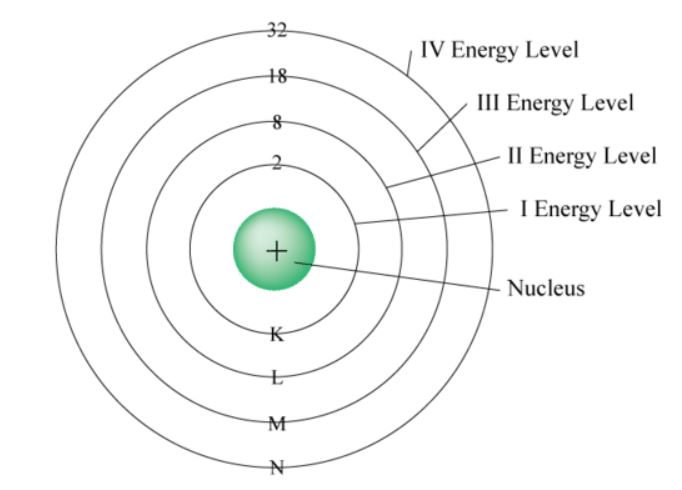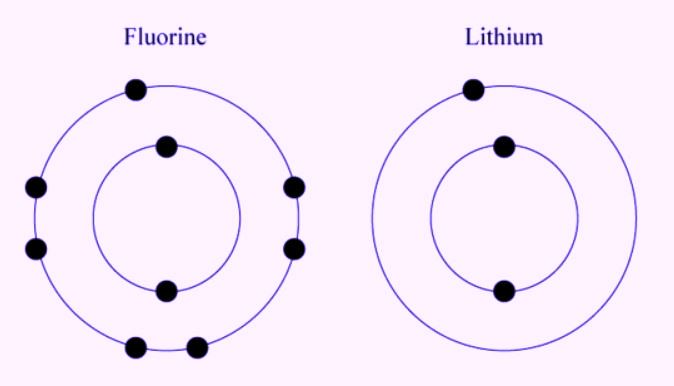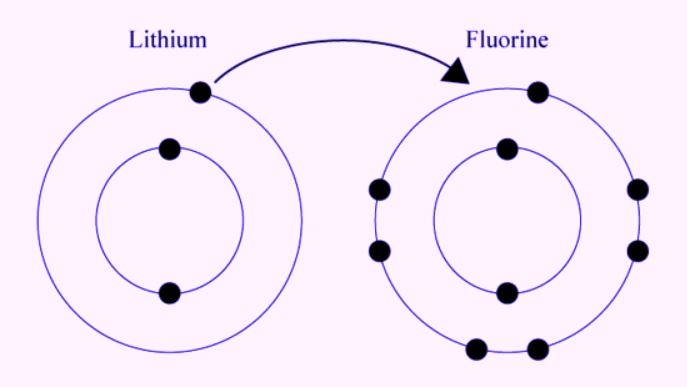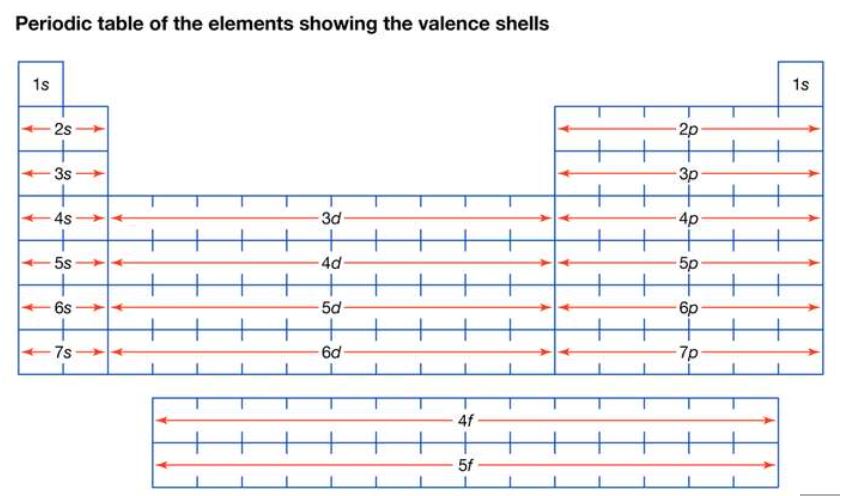What Are Energy Levels?
Energy levels (also called electron shells) are fixed distances from the nucleus of an atom where electrons may be found. Electrons are tiny, negatively charged particles in an atom that move around the positive nucleus at the center. Energy levels are a little like the steps of a staircase. You can stand on one step or another but not in between the steps. The same goes for electrons. They can occupy one energy level or another but not the space between energy levels.
The model in the Figure below shows the first four energy levels of an atom. Electrons in energy level I (also called energy level K) have the least amount of energy. As you go farther from the nucleus, electrons at higher levels have more energy, and their energy increases by a fixed, discrete amount. Electrons can jump from a lower to the next higher energy level if they absorb this amount of energy. Conversely, if electrons jump from a higher to a lower energy level, they give off energy, often in the form of light. This explains the fireworks pictured above. When the fireworks explode, electrons gain energy and jump to higher energy levels. When they jump back to their original energy levels, they release the energy as light. Different atoms have different arrangements of electrons, so they give off light of different colors.

Energy Levels and Orbitals
The smallest atoms are hydrogen atoms. They have just one electron. That one electron is in the first energy level. Bigger atoms have more electrons. Electrons are always added to the lowest energy level first until it has the maximum number of electrons possible. Then electrons are added to the next higher energy level until that level is full, and so on.
How many electrons can a given energy level hold? The maximum numbers of electrons possible for the first four energy levels are shown in the Figure above. For example, energy level I can hold a maximum of two electrons, and energy level II can hold a maximum of eight electrons. The maximum number depends on the number of orbitals at a given energy level. An orbital is a volume of space within an atom where an electron is most likely to be found. Some orbitals are shaped like spheres (S orbitals) and some are shaped like dumbbells (P orbitals). There are other types of orbitals as well.
Regardless of its shape, each orbital can hold a maximum of two electrons. Energy level I has just one orbital, so two electrons will fill this energy level. Energy level II has four orbitals, so it takes eight electrons to fill this energy level.
The Outermost Level
Electrons in the outermost energy level of an atom have a special significance. These electrons are called valence electrons, and they determine many of the properties of an atom. An atom is most stable if its outermost energy level contains as many electrons as it can hold. For example, helium has two electrons, both in the first energy level. This energy level can hold only two electrons, so helium’s only energy level is full. This makes helium a very stable element. In other words, its atoms are unlikely to react with other atoms.
Consider the elements fluorine and lithium, modeled in the Figure below. Fluorine has seven of eight possible electrons in its outermost energy level, which is energy level II. It would be more stable if it had one more electron because this would fill its outermost energy level. Lithium, on the other hand, has just one of eight possible electrons in its outermost energy level (also energy level II). It would be more stable if it had one less electron because it would have a full outer energy level (now energy level I).

Both fluorine and lithium are highly reactive elements because of their number of valence electrons. Fluorine will readily gain one electron and lithium will just as readily give up one electron to become more stable. In fact, lithium and fluorine will react together as shown in the Figure below. When the two elements react, lithium transfers its one “extra” electron to fluorine.

In the progression thus far, three atoms—hydrogen, lithium, and sodium—have one electron in the outermost shell. As stated above, it is these outermost electrons that determine the chemical properties of an atom. Therefore, these three elements should have similar properties, as indeed they do. For this reason, they appear in the same column of the periodic table of the elements (see periodic law), and the same principle determines the position of every element in that table. The outermost shell of electrons—called the valence shell—determines the chemical behaviour of an atom, and the number of electrons in this shell depends on how many are left over after all the interior shells are filled.

Read article – Joules law of electric heating
Visit NCERTplanet.com for NCERT solutions and Textbook downloads




